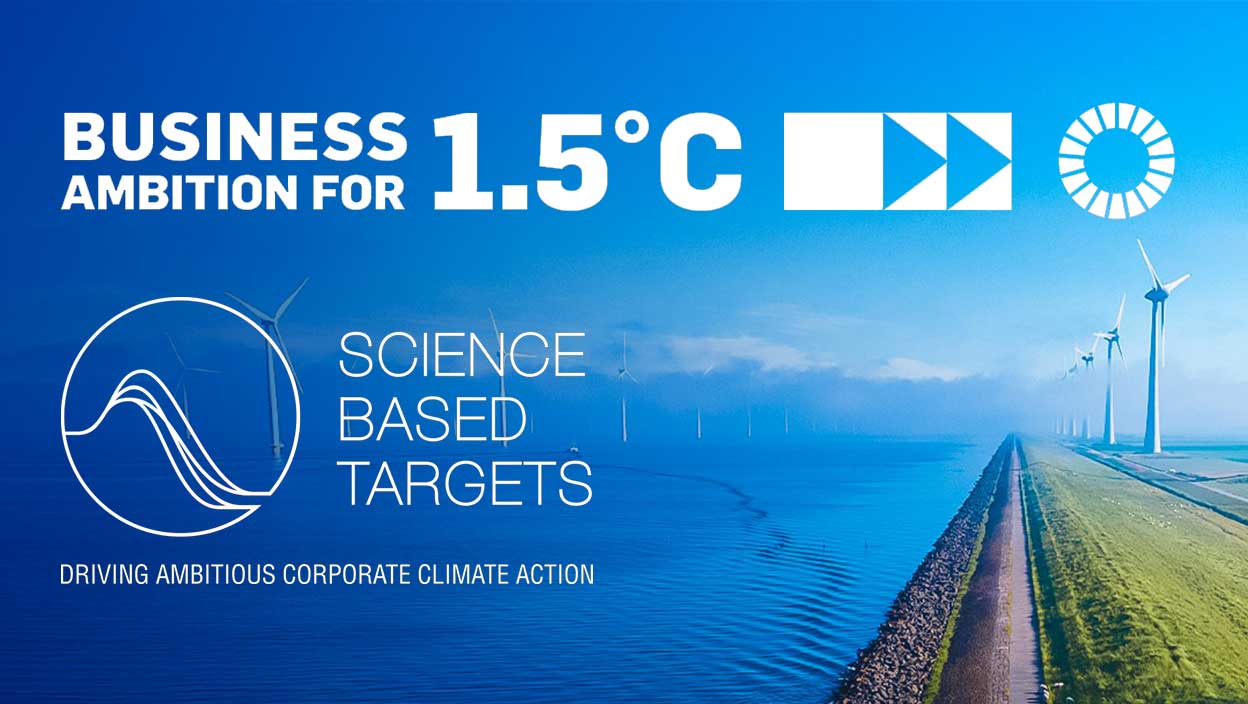
Carbon reduction
We've created roadmaps, milestones and action areas based on our 2022 emissions.
Hexagon is dedicated to reaching net-zero emissions. We will reduce total value chain emissions in line with a Net-Zero Standard by 2050. Along the way, we will reduce our Scope 1 and Scope 2 emissions by 95% by 2030.
In addition, we’ve joined the Business Ambition for 1.5°C and achieved validation of our near-term and long-term carbon emissions targets by the SBTi.
Hexagon’s carbon targets approved by the SBTi are:
Overall Net-Zero Target:
- Hexagon AB commits to reach net-zero greenhouse gas emissions across the value chain by 2050.
Near-Term Targets:
- Hexagon commits to reduce absolute scope 1 and 2 GHG emissions 95% by 2030 from a 2022 base year.
- Hexagon also commits to increase active annual sourcing of renewable electricity from 34.8% in 2022 to 100% by 2027 and to continue active annual sourcing of 100% renewable electricity through 2030.
- Hexagon further commits to reduce scope 3 GHG emissions 51.6% per EUR value added by 2030 from a 2022 base year.
- Hexagon finally commits that 50% of its suppliers by spend covering purchased goods and services will have science-based targets by 2028.
Long-Term Targets:
- Hexagon commits to maintain a minimum of 95% absolute scope 1 and 2 GHG emissions from 2030 through 2050 from a 2022 base year.
- Hexagon commits to reduce scope 3 GHG emissions 97% per EUR value added by 2050 from a 2022 base year.
Baseline emissions footprint
Baseline emissions are a record of the greenhouse gases (GHG) we produce before introducing any emissions reduction strategies. This baseline is the reference point against which future reductions will be measured.
We’ve recorded Scope 1, Scope 2 and specific categories of Scope 3 emissions for two reporting years. The 2022 data forms the baseline to measure Hexagon’s Carbon Reduction Plan targets against, as we substantially increased our scope of reported data in 2022 to cover all of Hexagon’s operations.
This data covers all locations where the company conducted business over the calendar year. Hexagon reports GHG emissions in tonnes of carbon dioxide equivalent (TCO2e) based on the GHG Protocol Corporate Accounting and Reporting Standard.
The totals below include the energy and emissions from the buildings Hexagon operates. We’ve used location-based conversion factors and applied market-based accounting methodology for grid emissions.
There are ten global categories of Scope 3 emissions: Purchased goods and services, capital goods, fuel and energy-related activities, upstream and downstream transportation and distribution, waste generated in operations, business travel, employee commuting, use of sold products and end-of-life treatment of sold products.

Baseline Emissions year 2022
- Scope 1 = 14,784 t CO2
- Scope 2 (market-based) = 36,800 t CO2
- Scope 3 = ~349,268 tCO2
- Hexagon CO2 Footprint = ~400’852 tCO2 in baseline year
Discover our emissions-reduction pathway
To begin our CO₂ reduction journey, Hexagon is defining facility-specific roadmaps aligned with the 1.5 °C scenario following the Net-Zero Standard. We adapt our internal practices and engage with key stakeholders to enable change. Hover over the "+" icons below to learn more.
Roadmap definition
The roadmap was defined in 2023 with all CO₂ improvements assessed across our full value chain.

Avoidance quantified*
We aim to have 80% of our energy come from renewables while setting Avoidance Emissions Standards in place.
Avoidance achieved
We aim for a 20% reduction in logistics emissions, CO₂
avoidance in our products and enabled credits through R-evolution.
Aligned to net-zero
By 2030, we want to see a 95% reduction in our Scope 1 & Scope 2 emissions and a 25% reduction in our full value chain.
Net-zero
Our net-zero reduction will follow the 1.5° scenario across our full value chain while sequestering remaining emissions.

* Avoided Emissions are the reduction in Green House Gas emissions that customers achieve by using Hexagon’s solutions. These Avoided Emissions are beyond Hexagon’s net-zero target.
Action areas
After assessing how to make changes, we defined four action areas on our decarbonisation journey. We commit to reducing our operational footprint and engaging other stakeholders to work towards a net-zero world.








